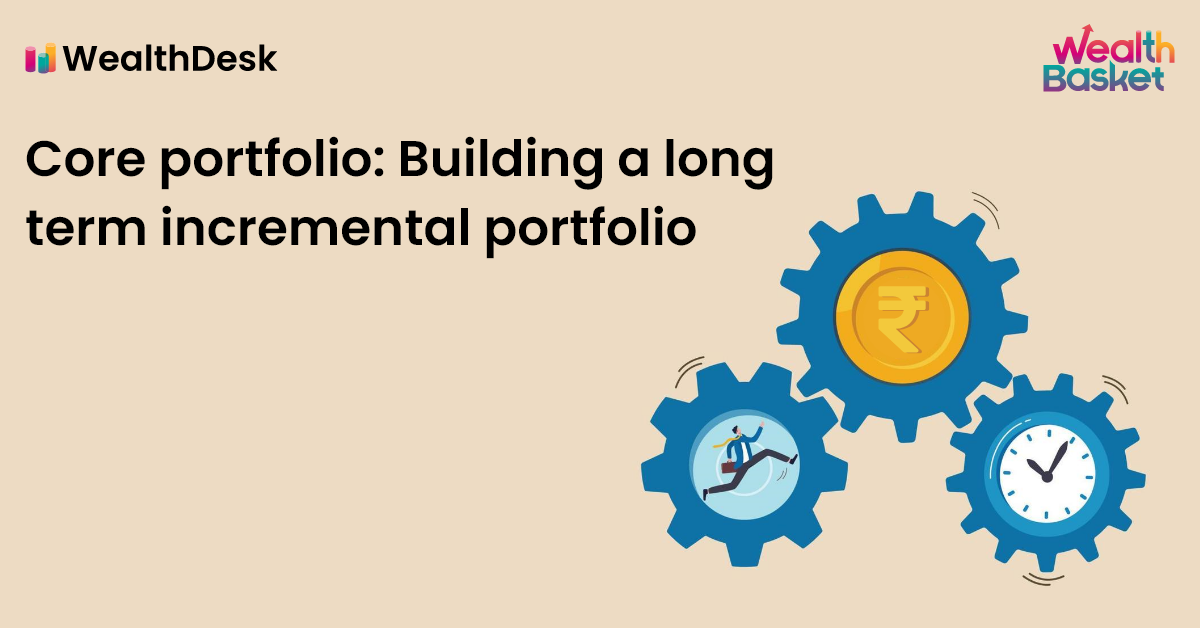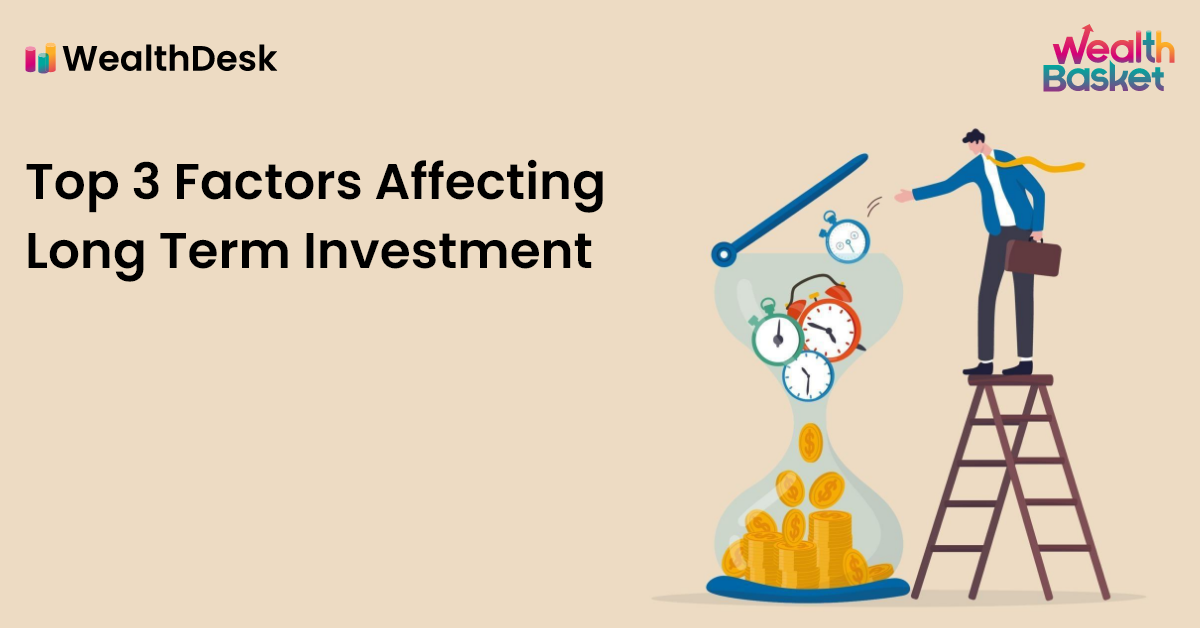You need lots of patience to hold your stocks for the long term especially when your stocks are outperforming; as you may be tempted to encash the profits. While equity stocks are considerably riskier investment instruments, you can fetch better returns if you hold stocks of some good companies for a longer duration.
So, what is a portfolio called when you hold equity stocks for the long term? Core portfolio!
This article explains in detail what a core portfolio is, how it works, and how you can use it to generate better long-term returns.
What is a Core Portfolio Strategy?
The core portfolio strategy primarily consists of index funds and large-cap stocks (top 100 companies on basis of average market capitalization over a 6-month period) that do not require constant monitoring. As a result, this portion of the portfolio is mostly passive.
The primary goal of the core portfolio is to generate long-term wealth and meet investment objectives by using strategic asset allocation.
An ideal example of a core portfolio will be ETFs (Exchange Traded Funds) that invest in blue-chip companies and track their performance.
How does a Core Portfolio work?
The instruments in the portfolio do not have to be the best-performing investments in the previous quarter. Still, they must have demonstrated their ability to deliver returns comparable to the market while posing less risk.
A core portfolio does not imply that an investor should refrain from taking risks, and safety involves investing in instruments that provide higher risk-adjusted returns. The core portfolio will invest in long term track record funds and blue-chip companies in equity.
Portfolio Creation For Investment – Factors to consider
Building an investment portfolio can be intimidating for those just starting. The key is to understand your risk tolerance while building a diverse portfolio. Smart investing considers your current expenses while also allowing you to plan for your short-term and long-term objectives.
Asset Mix and Asset Allocation
A sensible investment strategy through the intelligent allocation of assets can be essential in safeguarding your portfolio from a decline in a specific asset or market. Your investment goals and risk perception are the most fundamental aspects when allocating assets.
Allocating assets across asset classes such as equities, debt securities, government securities, property, precious metals, or other commodities could significantly minimize your portfolio risks.
Build an Investment Portfolio from Scratch
Building your portfolio from scratch can help create a long-term incremental core portfolio. Since it will only focus on creating a basket of securities from scratch, you will have space to accommodate various asset classes you wish to pour into your basket.
A systematic investment plan (SIP) for stock investing can be the ideal investment entry point to long-term financial planning and wealth creation.
Review Your Portfolio Investment Process
Measuring the performance of the chosen portfolio against predetermined benchmarks is a practice that every investor should adopt.
- When you notice a change in trend, understand the reason for the change, which will help you forecast future trends.
- Set new financial goals for the forthcoming year after observing the success of the existing portfolio in the context of the Return on Investments (ROI) for the year-end.
- Ascertain your risk tolerance and patience before finalizing an investment portfolio for the following year.
- Establish benchmarks according to your attitude to risk and devise a practical allocation strategy depending on the most feasible asset classes and investment tools.
Know How to Protect Stock Profits
Traders and speculators may not always win, but long-term investors rarely lose! The following dos and don’ts could be game-changers.
- Stock profits can be optimized when you invest for a longer duration.
- Hedging strategies help while protecting your stock profits since it suggests investing in securities with different levels of risk.
- ETFs could be your ideal bet to protect profits since they follow a passive investment strategy.
- Diversification is the evergreen option to spread your risks across the different asset classes.
Learn When to Exit a Stock
Watch the stock cautiously and note its typical rise. If it rises by 20-25% after breaking out of a solid base, then you should sell them in order to book profits, in case you are looking for a near term exit. Some investors choose to look at a long term horizon (5-8 years), and may not relate to this suggestion entirely.
Indicative Factors to Exit a Stock
- Change in management
- Change in the business environment
- Powerful strategy by a competitor
- Unreasonable price hike and fall
Know When to Rebalance Portfolio
Portfolio rebalancing is referred to as realigning the asset mix of the portfolio. When the market fluctuates, the price fluctuations may disturb your asset mix, hence, to bring it back to the desired level, you should perform portfolio rebalancing.
You can perhaps rebalance your portfolios once a year by selecting the time window from the several available options. Select an ideal asset allocation and accept deviations from it. The right time for rebalancing is when the investment strategy crosses the deviation during its investment journey.
But the problem with this method is that if market movements are more significant than the chosen deviation, you will need to rebalance your portfolio multiple times a year, which is expensive.
For a cost-effective approach, constantly watch the portfolio and rebalance it only when it falls short of a target set by the market or income-generating institutions.
How To Diversify Your Investment Portfolio?
A well-diversified portfolio helps to reduce risks while continuing in your long-term investment journey. You can start your journey by investing in equities, debt funds, ETFs, cash, and commodities. When your strategy gives you a favorable return, you can diversify to real estate and global markets.
Before you venture into diversification, ensure to –
- Invest in bonds with consistent cash flows or trustworthy and stable investments like mutual funds.
- Recognize the factors that influence the financial markets.
- Understand the factors that influence the market movement.
- Discover more about global markets as they have the potential to produce high returns in a short period.
- Periodically rebalance portfolios because it is critical to review your investment portfolio regularly to ensure that the various assets are in balance.
How To Make A Successful Long-Term Investment Decision?
Long-term investments necessitate a lot of dedication, self-control, research, and an understanding of the market. We have a few tips to help in successful long term investment decisions:
- Grow your wealth by acquiring sound knowledge and experience.
- Invest in a company that you understand. Before investing in a company, know the business and the industry.
- Check the financial statements of a company and invest in it. Please don’t base your investment decision on stock prices or their fluctuations.
- Stay away from the herd mentality. The decision to buy because everyone you know is buying could result in a capital loss in the long run.
Conclusion
When you have surplus monies, pay rises, or incentives, you decide to hold them idle in bank accounts, squander them, or invest in the stock market to keep them for the long term.
Why not use this money to add to your wealth? In your proposed systems, you can always make a supplementary purchase similar to stockpiling when the price falls, lowering your average cost of acquisition. Even if you have a SIP account, nothing prevents you from investing as and when your finances allow.
Discover stocks that suit certain filter criteria and dive into details to check their WealthBaskets.
At WealthDesk, we offer you readymade WealthBaskets consisting of stocks or ETFs reflecting an investment strategy or theme designed explicitly by the SEBI-approved investment professionals and make your investment journey hassle-free.
FAQs
You can focus on long-term wealth creation by investing in ETFs, and as you gain experience, you may consider investing in stocks.
ETFs, stocks, equity, debt funds or bonds, Public Provident Funds, and Unit Linked Insurance plans may be suitable for long-term investment.
The excellent performance of equities may encourage you to invest in equities but focus on asset allocation as you hold on to your financial strategy.
An effective core portfolio must have ETFs for passive investments and mutual funds for active investments.


















